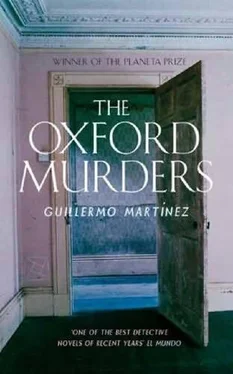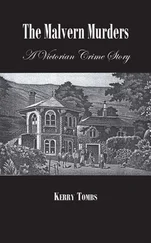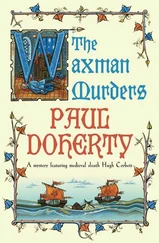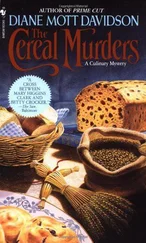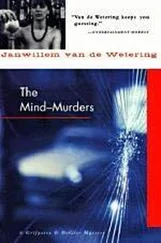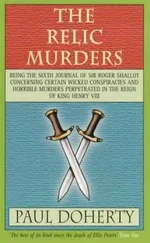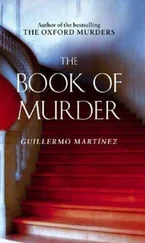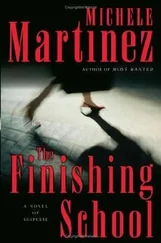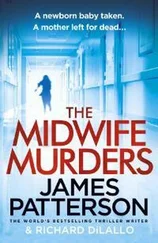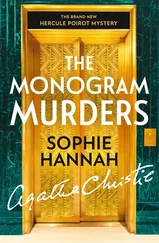The piece of paper I’d thrown in my bin that afternoon was the rough draft of a proof in which I’d made an error but then wanted to retrieve. I was sure that Brent would remember the paper if the police asked him about it. I thought up a brief message, like the details for an appointment. I had to provide her with an alibi, so the most important thing was the time. I chose three in the afternoon, the latest time of death given by the pathologist. I knew that she was in rehearsal by then. When the inspector asked me if there was anything else in the note, I remembered that you and I had been speaking in Spanish and that when I’d glanced at the letters on the Scrabble racks I’d seen the word ‘arc’, or circle in Spanish. The circle was in fact the symbol I suggested in my book as the start of a series with maximum uncertainty.”
“‘Aro’,” I said. “That’s what you wanted me to see in the photos.”
“Yes. I tried to tell you every way I could think of. You’re not English, so you’re the only person who could have formed the word out of the letters on the rack and read it as I had. As we walked to the Sheldonian after giving our statements, I tried to find out if you’d noticed that or any other detail I might have missed and that could have implicated her. You drew my attention to the final position of the head, eyes facing the back of the chaise longue. She confessed to me later that she hadn’t been able to stand the fixed stare of those eyes.”
“Why did you hide the blanket?”
“At the theatre, I asked her to tell me everything, step by step, exactly as it happened. That’s why I insisted on going to give her the news myself: I wanted to make sure she spoke to me before she had to face the police. I had to tell her about my plan and I wanted, above all, to find out if she’d been careless about anything else. She told me she’d worn her evening gloves so as not to leave fingerprints but that she had, indeed, had to struggle with her and had torn the blanket with the heel of her shoe. She thought the police might guess the murderer was a woman because of that. She still had the blanket in her bag, so we agreed that I’d get rid of it. She was extremely agitated and I was sure she’d break down as soon as Petersen started questioning her. I knew that if the inspector focused his investigation on her she’d be finished. And I knew that to lodge the serial murder theory in his mind I’d have to provide him with a second murder as soon as possible. Fortunately, in our first conversation, you had given me the idea that I needed, when we talked about imperceptible murders-murders that nobody saw as murders. A truly imperceptible murder, I realised, didn’t even have to be a murder.
“I thought immediately of Frank’s ward. I saw corpses wheeled out of there every day. I simply needed to get hold of a syringe and, as Petersen guessed, wait patiently for the first dead body to be placed in the little room off the main corridor. It was a Sunday, and Beth was away on tour. It was perfect for her. I checked the time of death noted on the label, to make sure that I too had an alibi, and then stuck the needle into the corpse’s arm, just to leave a puncture mark. That was as far as I was prepared to go. When I was researching unsolved murders, I’d read that forensic pa-thologists had for some time suspected that there existed a chemical that was dissipated within a few hours without leaving any trace. That suspicion was enough for me. And anyway, my murderer had supposedly planned things carefully enough to outsmart the police as well. I had already decided that the second symbol would be the fish, and that the series would be the first few Pythagorean numbers.
“From the hospital I went straight to the Institute and stuck a note similar to the one I described to Petersen on the revolving door. The inspector pieced that part of it together and I think I was a suspect for a time. It was after the second death that Sacks started following me.”
“But you couldn’t have done anything at the concert-you were sitting next to me!” I said.
“The concert…The concert was the first sign of what I most feared, the nightmare that has haunted me since childhood. In accordance with my plan, I was waiting for a car accident, in exactly the spot that Johnson chose to crash off the road. It was where I had my accident, and was the only thing I could think of for the third symbol in the series, the triangle. I thought I would send a note after the event, claiming an ordinary everyday car accident as a murder, a perfect murder that leaves no clues. That was my choice and it would have been the last death. Straight after, I intended to publicise the solution to the series which I myself had initiated. My imaginary intellectual opponent would admit defeat and either disappear quietly, or leave behind a few false trails so that the police would continue chasing a ghost a little longer. But then the man died at the concert.
“It was what I was looking for-a death. From where we were sitting it really did look like someone was strangling him. It was easy to believe we were witnessing a murder. But perhaps the most extraordinary thing was that the dead man had been playing the triangle. I took it as a good omen, as if my plan had been approved at a higher sphere and life was making things easy for me. As I’ve said, I’ve never known how to read the signs in the real world. I thought I could appropriate the percussionist’s death for my plan. While you and the others rushed towards the stage, I checked that nobody was looking and tore out of the programme the two words that I needed for my message. Then I simply placed them on my seat and followed you. Later, when the inspector motioned to us and made his way along our row, I stopped deliberately, as if stunned, just before reaching my seat, so that he would be the one to pick up the words. That was the little illusion I created. Of course, fate had-or so I assumed-given me an extraordinary helping hand, because even Petersen was there to witness events. The doctor who went up on stage confirmed what had been obvious to me: it was a natural respiratory arrest, despite its dramatic appearance. I would have been surprised had the post-mortem revealed anything strange.
“My only remaining problem-which I had already solved once-was making a natural death look like murder, and providing a convincing theory so that Petersen would include the death as one of the series. It was more difficult this time, because I couldn’t get near the body and put my hands around the neck. I then remembered the case of the telepath. All I could come up with was to suggest that it was a case of remote hypnosis. But I knew that it would be almost impossible to convince Petersen, even if he still had doubts about Mrs Crafford’s death. It wasn’t, so to speak, within the aesthetic of his reasoning, in the realm of the probable. He wouldn’t have thought it a plausible theory, as we would say in mathematics. But in the end none of it proved necessary. Petersen easily accepted a theory that, to me, seemed much more flimsy, that the man was attacked from behind. He accepted it, even though he himself was there and saw the same as us: that for all the theatricality of the death, there was no one else there. He accepted it for the reason people usually believe things: because he wanted to believe.
“Perhaps the strangest thing is that Petersen didn’t even consider the possibility that it might have been a natural death. I realised that though he may have had doubts before, he was now quite convinced that he was pursuing a serial killer, so it seemed perfectly reasonable to find murders at every turn, even on the one evening he was at a concert with his daughter.”
“Don’t you think Johnson could have attacked the percussionist, as Petersen believes?” I asked.
Читать дальше
